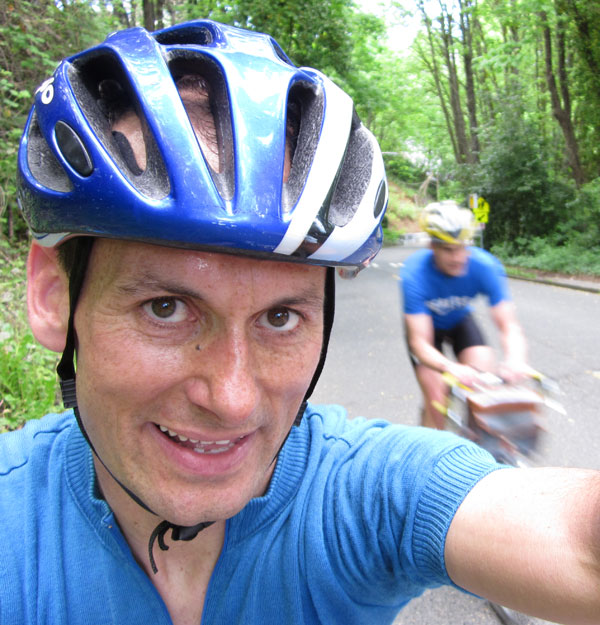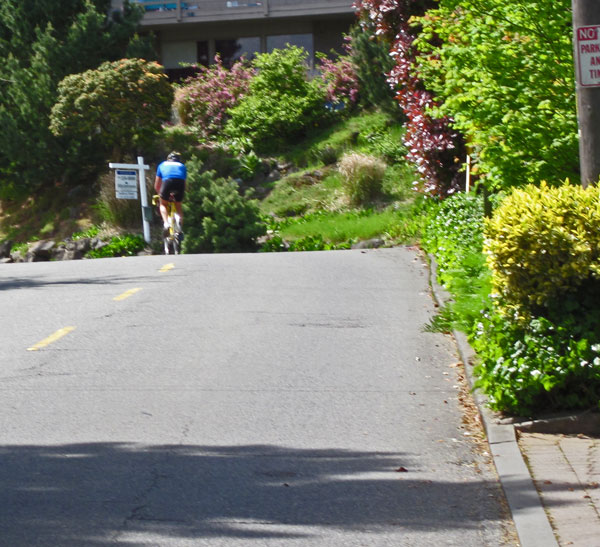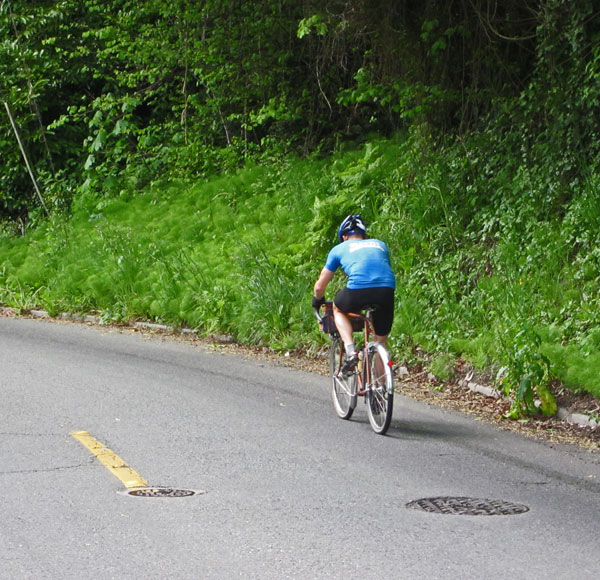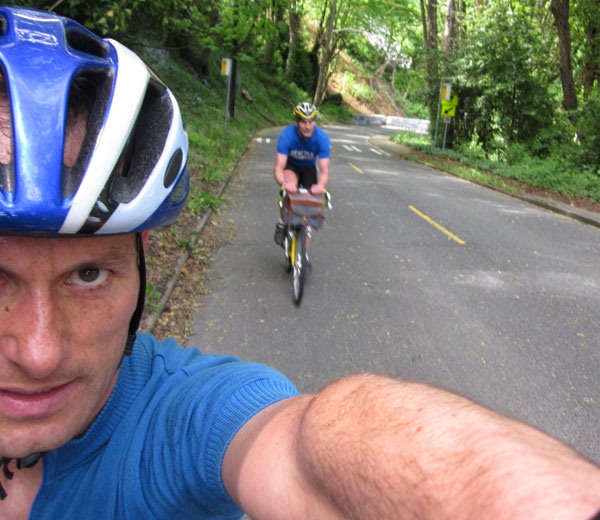PBP Training: Hill Intervals

Whether you are training for Paris-Brest-Paris (PBP), a century ride or racing, speed is an essential part of a successful event. Simply put, the faster you are able to ride, the more enjoyable (and less stressful) your ride will be. You’ll be able to work with pacelines, rather than just hang on. You’ll be able to take leisurely stops, rather than worry about running out of time. And hills will provide a welcome challenge rather than a seemingly insurmountable obstacle.
Fortunately, it’s easy and fun to get faster. There is little mystery about how to acquire speed. The key concept is “overload and recovery/adaptation”. That means that you push your body beyond its comfortable maximum. Your body then adapts to this unfamiliar demand by becoming stronger. You need to give your body time to adapt by resting.
The overload part of the training is best done through structured intervals. During normal riding, even if you try hard, it’s difficult to achieve the “overload” that generates the maximum effect. Intervals allow you to ride as hard as you can, and then rest.
I find that a little friendly competition gives me the incentive to work harder than I usually would, so I often do the intervals with a friend or two. Plus, the rest periods between the intervals are a great time to talk, once we have recovered our breath.
Since climbing is the place where speed provides the greatest benefit, we pick a hill that is a little less than half a mile long. Our favorite is Alder Street in Seattle, because it undulates and curves, making it more interesting than a unrelenting, straight slog uphill. This street also offers great views, and a tree canopy offers shade on hot summer days.

To accommodate differences in our speed and daily form, we use a handicap for the climb. One of us starts a bit ahead (above), and then we race each other to the top. The slower rider tries to stay ahead, while the faster rider slowly catches up.

Ideally, we get to the top in a lung-busting sprint with less than a bike-length separating us.

During the climb, our legs should feel warm, maybe even with a slight burning sensation. On top, we should be so out of breath that we can hardly talk. It’s truly a maximum effort.
If we did a good job and achieved our absolute maximum, we take a little detour on the way down to get some extra rest (and work on our descending skills). If we misjudged the handicap, then either the “chaser” didn’t catch the leader, or passed too early. As we descend the hill, we adjust the handicap for the next run.
The handicap really makes it fun, because the rider who is most exceeding expectations gets to the top first, rather than the fastest rider. I think handicaps would be a great way to make competition interesting for riders of all abilities.
After four or five intervals, we spin along Lake Washington for half an hour before we do the same thing over. Then it’s time to go home – usually rather slowly, because we are tired. The whole training session takes less than two hours.
The recovery part of the “rest and recovery” equation is easy: No training the next day. We may run errands on the bike, or just stay in the office and get some work done!
The effects of the interval training are almost immediate and profound. Two or three interval sessions make a huge difference during the next big ride, whether it’s climbing a mountain or riding into a sustained headwind. Just make sure to rest enough to allow your body to adapt to the new demands you are placing on it.


